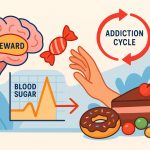Energy balance is the relationship between the number of calories consumed through food and drink, and the number of calories expended by the body to maintain vital functions and support physical activity. Maintaining this balance is crucial for weight regulation, metabolic health, and overall well-being. When intake equals expenditure, body weight remains stable. However, persistent imbalances—whether positive or negative—can lead to health consequences such as obesity, undernutrition, or metabolic disorders.
Understanding Energy Intake
Energy intake refers to the total caloric content of all consumed food and beverages. It is primarily influenced by portion size, macronutrient composition (carbohydrates, fats, proteins), and meal frequency. Highly processed foods often lead to higher calorie consumption due to their energy density and low satiety levels. Additionally, psychological factors such as stress or habit can lead to overeating or mindless snacking, contributing to a long-term positive energy balance.
Components of Energy Expenditure
The body expends energy through three main processes:
- Basal metabolic rate (BMR) – the energy required for vital functions like breathing and circulation (about 60–75% of total expenditure).
- Thermic effect of food (TEF) – the energy used for digestion and nutrient processing (approximately 10%).
- Physical activity – includes both structured exercise and non-exercise movement (NEAT), accounting for the remaining portion and varying widely among individuals.
Certain factors like age, muscle mass, and thyroid function significantly affect these components.
Imbalance and Its Consequences
When energy intake exceeds expenditure, the body stores excess calories as fat, leading to gradual weight gain. If the imbalance is sustained, it can increase the risk of type 2 diabetes, cardiovascular disease, and joint stress. On the other hand, negative energy balance—when energy expenditure is greater than intake—can result in weight loss, fatigue, decreased immunity, and hormonal disruption. Understanding this dynamic helps in designing sustainable weight management strategies.
Achieving and Maintaining Balance
Achieving energy equilibrium requires awareness of both dietary intake and physical activity. Tracking calories, adjusting portion sizes, and staying active are effective strategies. Resistance training increases BMR by building muscle, while aerobic activity boosts overall energy burn. A personalized approach that considers lifestyle, age, and goals is key. It’s also important to focus on nutrient-dense foods rather than simply cutting calories.
Glossary
- Energy balance – the comparison between caloric intake and caloric expenditure.
- Basal metabolic rate (BMR) – the energy used by the body at rest for basic functions.
- Thermic effect of food (TEF) – the energy cost of digesting and metabolizing food.
- NEAT – Non-exercise activity thermogenesis, energy used for everyday movements.
- Positive/negative energy balance – when caloric intake is higher/lower than expenditure.
- Nutrient-dense foods – foods high in essential nutrients relative to their calorie content.


